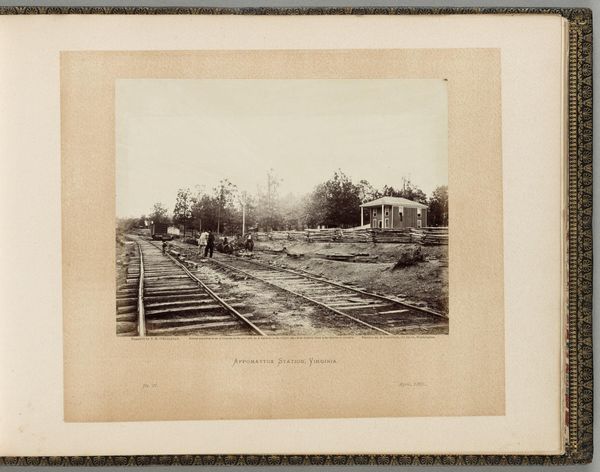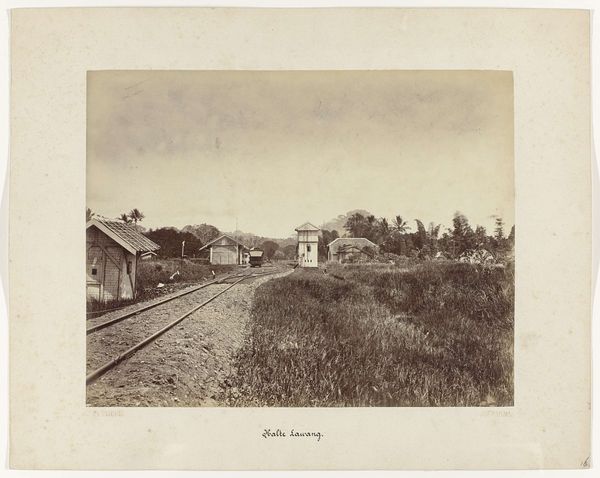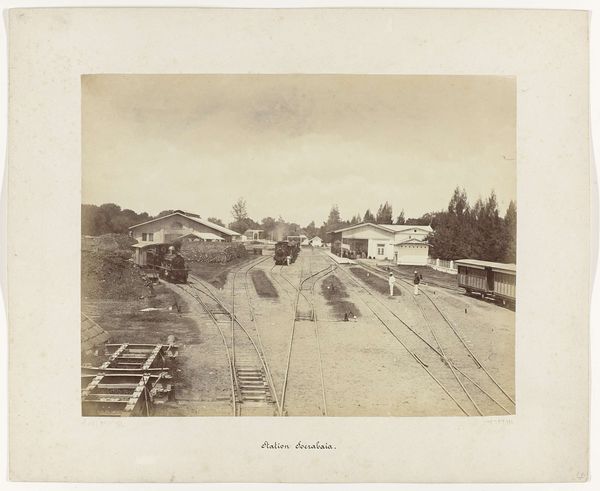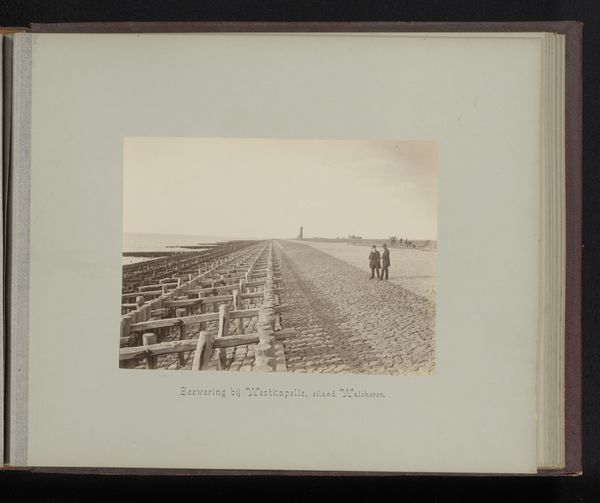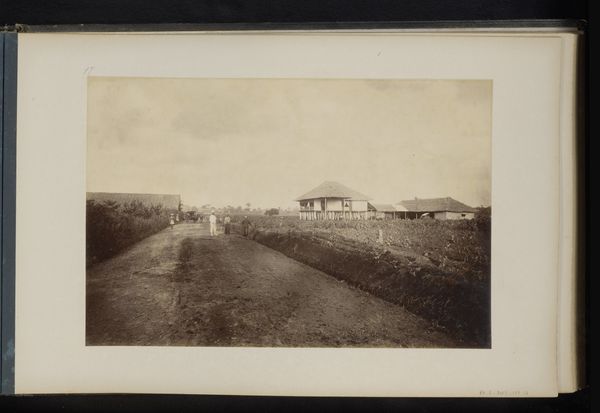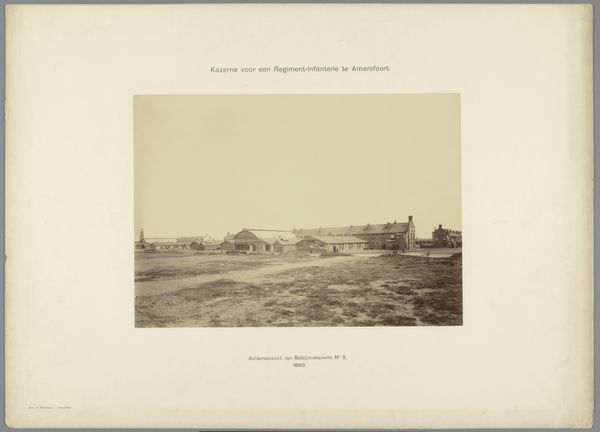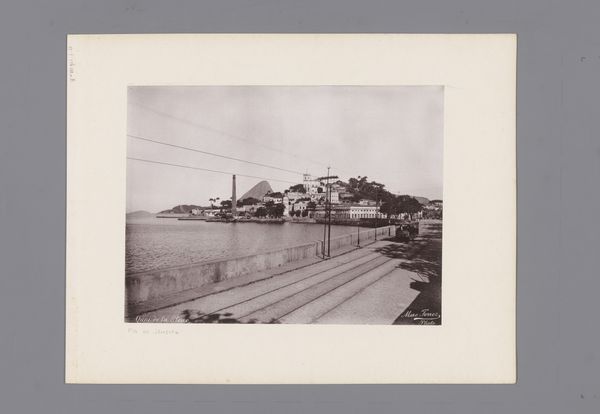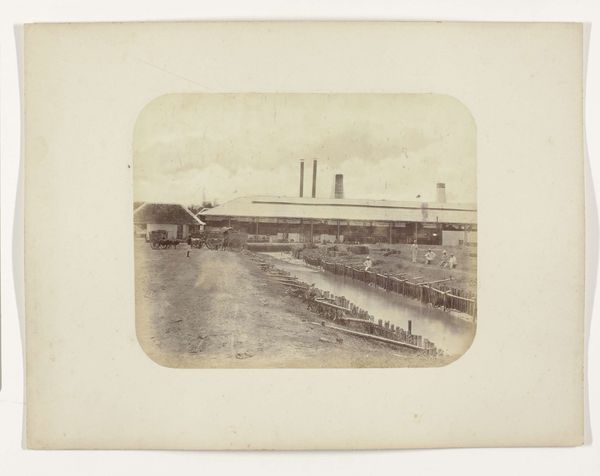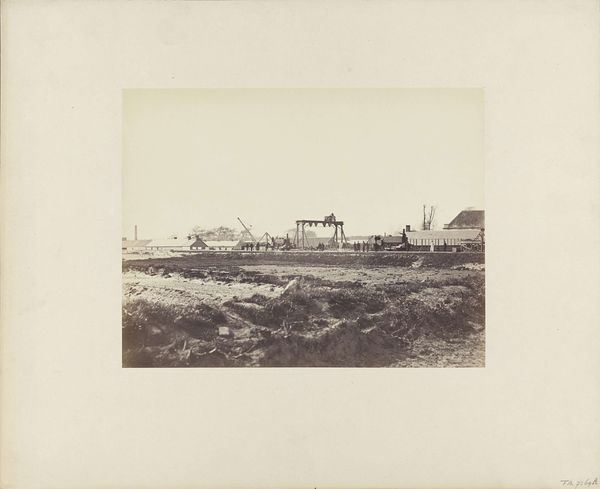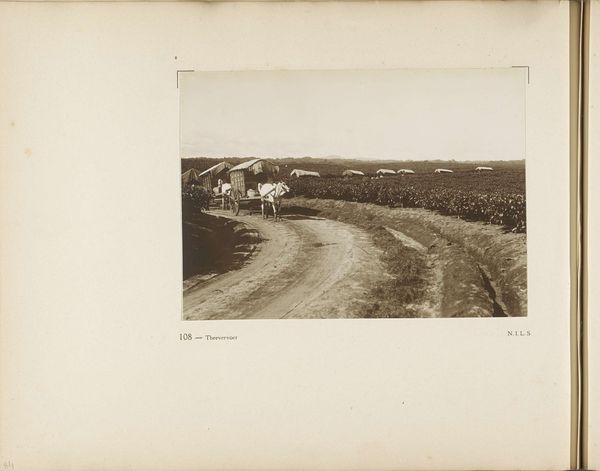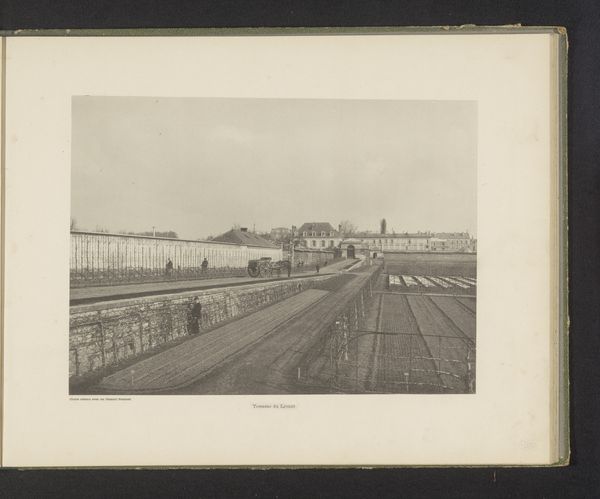
Halte te Tangoeng / Onder de warande staat de directeur der openbare werken de Bruijn tusschen den Hoofd Ingenieur en den Ingenieur van de Waterstaat Vrendenberg. 1867
0:00
0:00
photography, albumen-print
#
landscape
#
photography
#
orientalism
#
albumen-print
Dimensions: height 195 mm, width 239 mm, height 305 mm, width 450 mm
Copyright: Rijks Museum: Open Domain
Editor: This photograph, entitled "Halte te Tangoeng," was created around 1867 by Woodbury & Page. It's an albumen print that captures a train station. The vast openness really strikes me. What do you see in this piece, especially regarding its historical context? Art Historian: I see this image as a fascinating document of Dutch colonial infrastructure in what is now Indonesia. Notice how the train, station and the three men featured were critical tools for the Dutch colonizers, especially their exploitation of resources and controlling territory? Who do you imagine had access to that railway? Editor: Probably not the local population…it's hard not to see a kind of power dynamic, with those three figures seemingly placed in the center. Was photography often used this way during that period? Art Historian: Exactly. Photography in this era served as a powerful tool for colonial administrations. Images like these were often used to project an image of progress and control, reinforcing the colonizers' sense of superiority and justifying their presence. It also played a vital role for Orientalism as it further captured cultural contexts that others from afar could study to formulate perceptions and even exploit it further. Editor: So, it's less a neutral depiction and more a kind of propaganda? It’s a constructed image used to show their advancement? Art Historian: Precisely. The photographer isn't simply recording reality; they're actively participating in the construction of a narrative of colonial power and technological advancement. Who benefitted most from that narrative being created? Editor: That's eye-opening. I guess I had been only focusing on it’s landscape qualities, but seeing it in this political and historical frame makes it way more impactful. Art Historian: Understanding the social and political forces at play can unlock a much deeper level of meaning within artworks. Editor: This has really shifted my view on 19th-century photography. I'm so glad I asked!
Comments
No comments
Be the first to comment and join the conversation on the ultimate creative platform.
